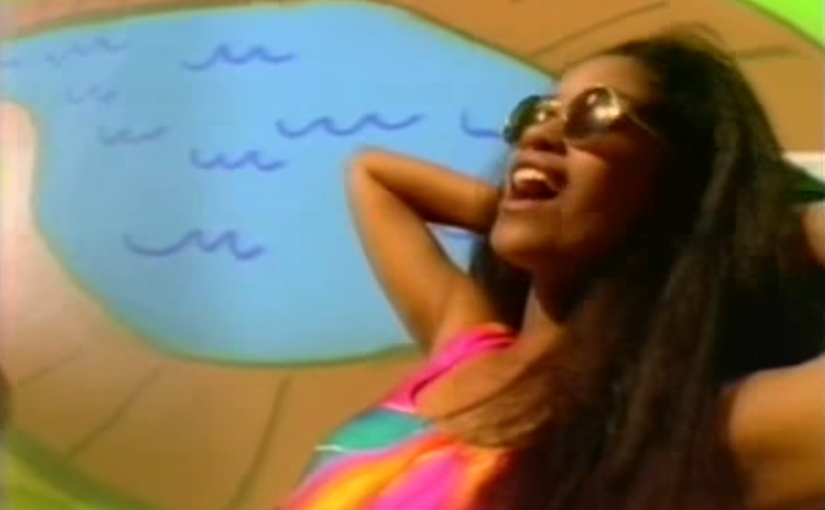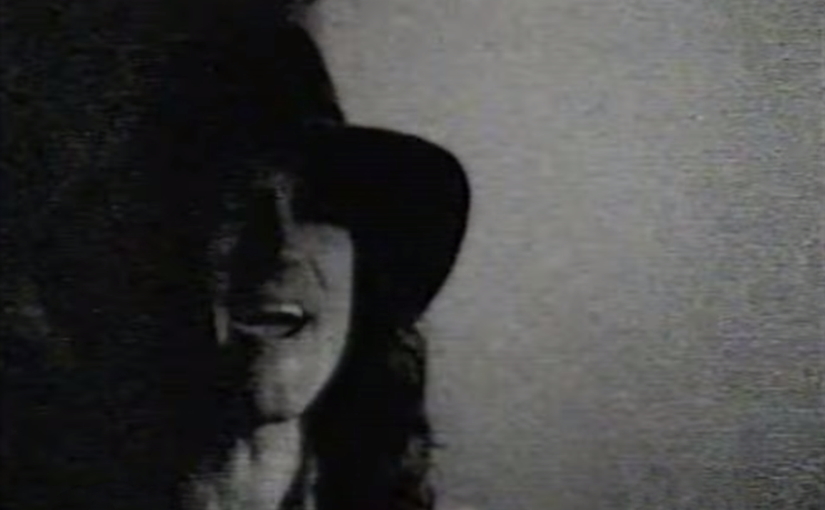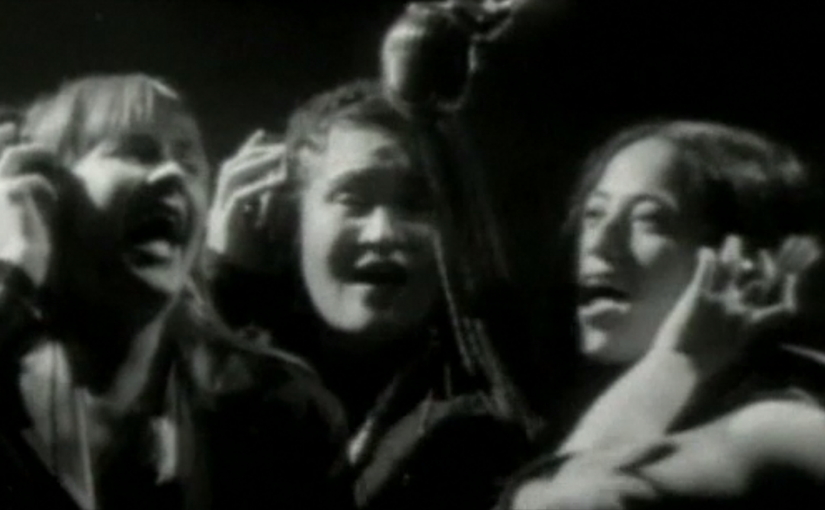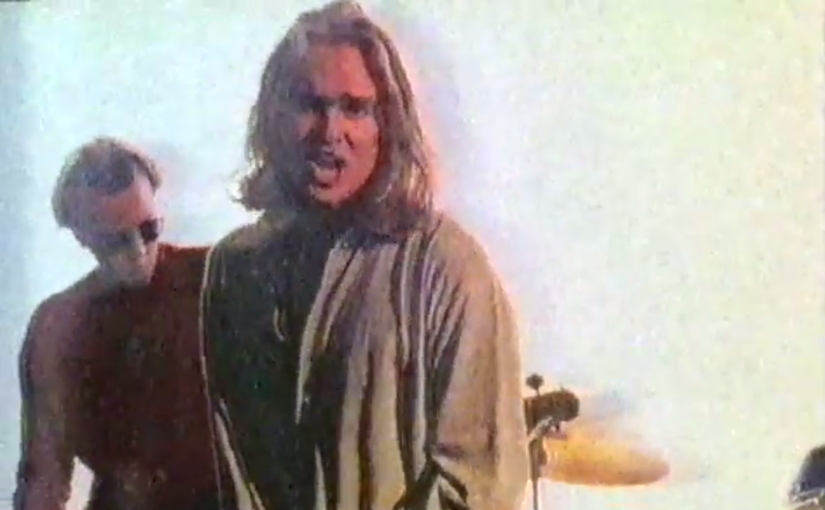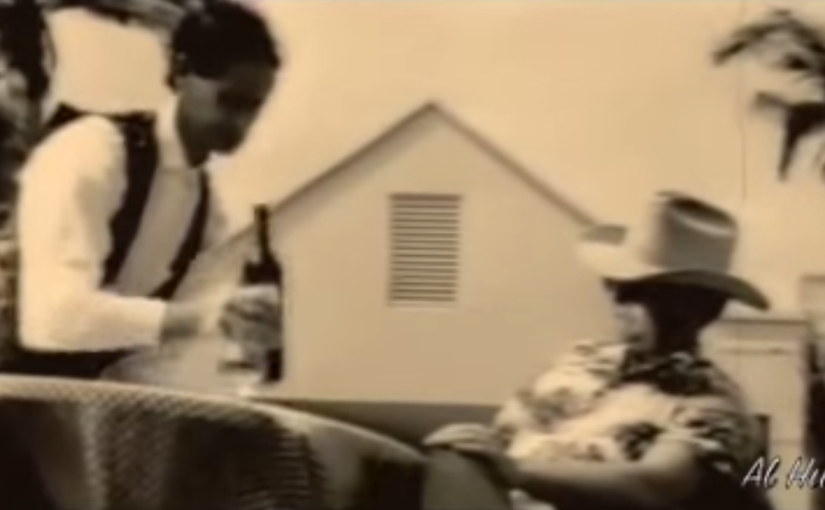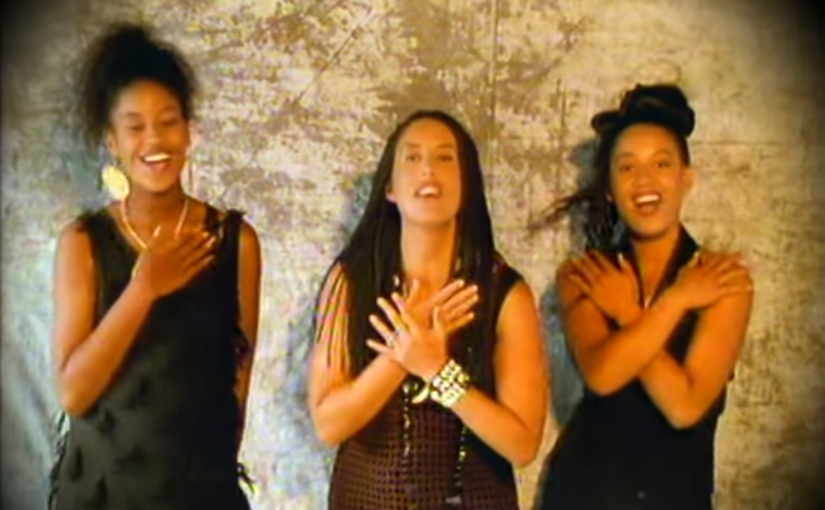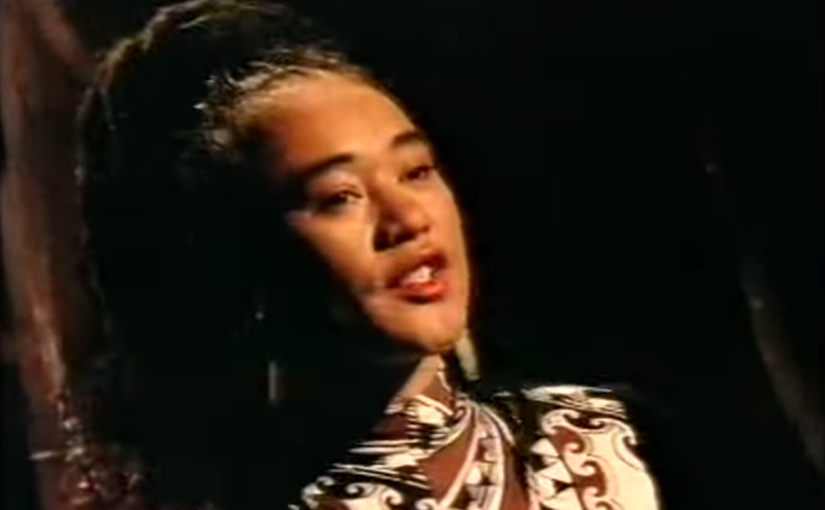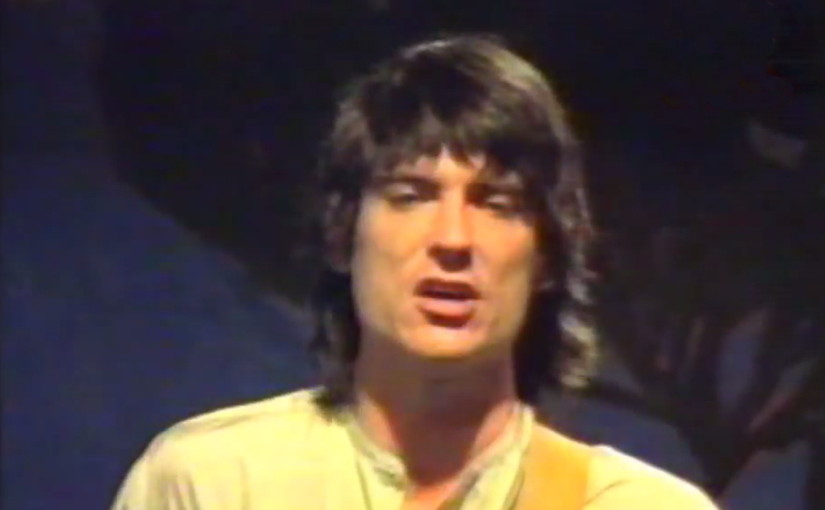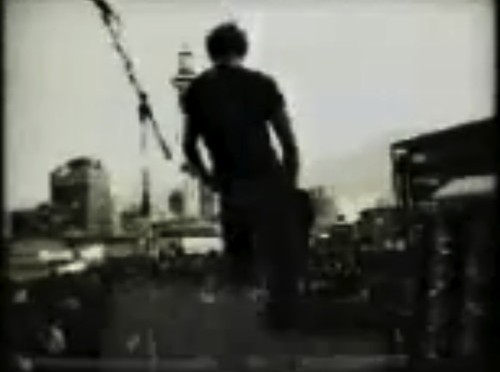“Sitting by the Phone” was Unitone Hifi getting very very pop. Peter at DubDotDash has the interesting tale behind the song – after Teremoana previously had a song rejected from Deepgrooves due to it being too political, Unitone Hifi teamed up with her and went in totally the other direction.
The video is even more pop, positively revelling in the song’s popfulness. In a bright cartoony world, Teremoana and two pals hang out by a swimming pool. Over behind a wire fence, we also see three dudes hanging out, playing cards – presumedly they are too busy shuffling to phone Teremoana.
Bobbylon busts in with a verse, offering the male perspective (he <3’s her too). MC Just One pops up for a rapped verse, but his argument is less convincing. “I’ll tell you one thing, G, I’ll call when I call,” he raps. Seriously, a guy calling a girl “G” is at least as awful as being called “bro” or “dude”. Instant deal-breaker.
Now, the important thing to remember is that back in 1992, the only people who had cellphones were businesspeople. So when Teremoana sings of sitting by the telephone, she’s talking about the landline in her house. But it is to the video’s credit that there is no phone in the video. Instead Teremoana’s hanging out in the sun, with her friends – not a lovesick shut-in. It’s a sunny, optimistic video – just right for seeing in the summer.
Best bit: the green screen pool, a good use of technology.
Director: Josh Frizzell
Ngā Taonga Sound & Vision
Next… extraterrestrial.
